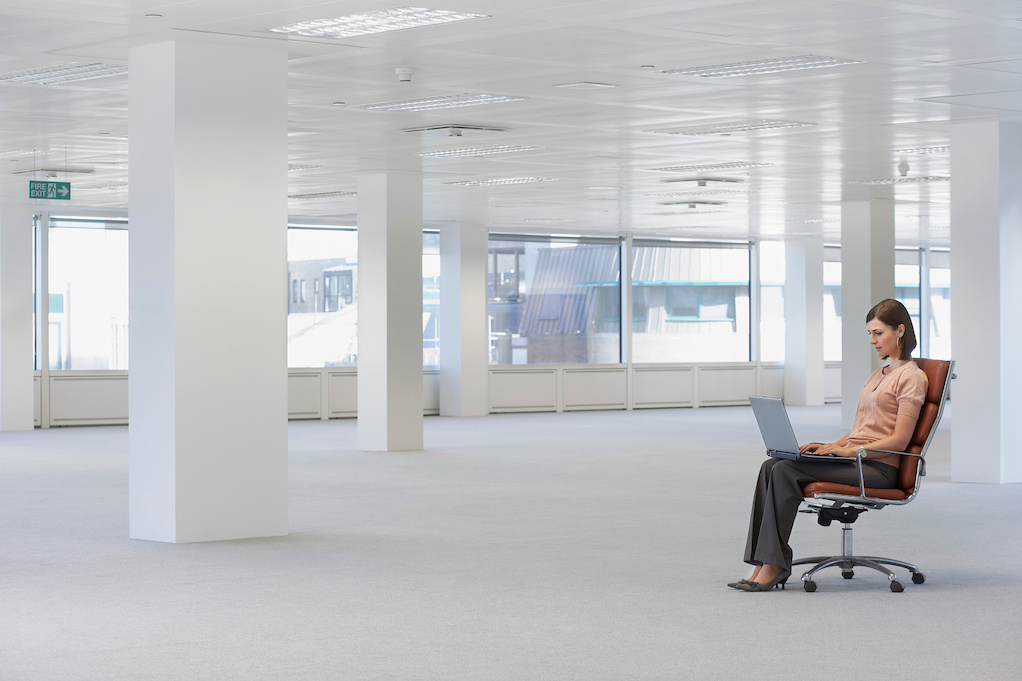It’s the question faced by every business in America- With the rise of remote work, do we cut our losses and shrink our corporate footprint, or do we retain our leases and encourage employees to return to the office?
There is no easy answer, and that’s exactly why there is so much controversy surrounding the topic. Many businesses are paying millions for wasted space, and as their leases approach their expiration, they are wondering if they should just slash their footprint. On the other hand, the wasted space issue is precisely why some businesses are looking to enforce at least in-person work (at least in a hybrid schedule)
Your company’s optimal solution will depend on its unique needs, workforce culture, and specialties- but read on. We’ll outline all the considerations you need to know to make your decision and arrive at your optimal space utilization- no matter what it may be.
1. Work from Home's Effect on CRE
2. Should You Shrink Your Footprint?
3. Measuring Your Space Utilization
Work from Home’s Effect on CRE
If the work-from-home movement gave Americans anything- it’s freedom. According to McKinsey and Company, “58% of American workers have the option to work from home at least part of the week.”
This opens a world of possibilities for most Americans. This kind of work/life freedom has never been witnessed before. It’s not only individuals benefiting from remote and hybrid work opportunities. Businesses are certainly looking on the bright side as well.
According to the CEO of Yelp, Jeremy Stoppelman,
|
“We’re suddenly able to tap into and hire employees from all 50 states that was impossible in an environment where we were trying to get people into office.” |
So not only can businesses access expansive talent pools, but they can also seriously improve their bottom line by giving their employees the option to work from home. As a result, the money spent on their square footage can go elsewhere.
Dramatically Underutilized Space
However, be aware that it’s not always so simple. Companies that have taken advantage of remote working have seen dramatic reductions in the utilization of their commercial spaces (which means more wasted money if you don’t do anything about it). Take, for instance, Yelp. When Yelp gave employees the option to work from home, what happened? CEO, Stoppelman says, “They didn’t show up. It was something like 1% utilization in all these beautiful offices we had set up.”

Ouch! 1% utilization? That’s got to be an exaggeration! Well, sort of.
Yelp witnessed a 2% utilization in offices in traditional business hubs NYC, Chicago, and D.C. As such, they cut their losses and closed 450 thousand square feet of office space. And when the current office rental rate in Manhattan averages around $91 per square foot, that decision is saving them big time.
Should You Shrink Your Footprint?
The opportunity to streamline business spending by cutting away at the fat of its footprint is once in a lifetime- and an overwhelming number of businesses are jumping on board. According to a survey of 250 U.S. businesses by software provider Robin,
|
“46 percent (of U.S. companies) plan to reduce their office footprint over the next 12 months. Of those, 59 percent said they would shrink their space by more than half.” |
However, before you go ahead and cut down the breadth of your portfolio, you must acknowledge the uncertainty in doing so. While getting rid of wasted space will save you CRE $, it may not be wise to ditch your corporate offices entirely. The remote movement is still evolving, and no one can quite predict if (or when) it will end.
According to GlobeSt, “Employers, at least larger ones, have made it clear that they want employees back in the office. There’s culture to pass on, innovation to happen, and, typically unstated, executives who worry that they can’t keep an eye on those wily workers to be sure they’re being productive.”
Some professionals argue that spontaneous in-person collaboration cannot be replaced. Properly mentoring, fostering a social life, and building a company culture is nearly impossible to achieve when employees are scattered across time zones… right?
Well, suppose you ask Stoppelman of Yelp again. In that case, he has other thoughts, “Our productivity has sustained at least as good if not better, and in fact, our revenue is higher than pre-pandemic…
|
"In my mind if you’re not going to remote or seriously thinking about it- you’re losing out on one of the biggest free lunches in business." |
The truth is there are benefits to both in-person and remote work. It all depends on the type of company culture you want to build.
So rather than blindly jump on board with whatever’s popular, it is a moment to step back and adapt. Your corporate real estate is the best place to adjust right now, as typically, one of an organization’s top costs is CRE. Streamlining your portfolio and optimizing your utilization will save you millions and dramatically improve your bottom line in such a critical time.
If some or most of your employees are working from home, you can take a hard look at how this influences your CRE spending and how the decision to downsize potentially will affect your EBITDA.
Measuring Your Space Utilization
To properly answer this question, you should be aware of the current utilization of each of your offices. This requires taking your employee headcount (projected out for the next few years) and multiplying it by the square footage needed per employee. However, since we are getting efficient here, take the number of seats you need rather than the employee count. As with hybrid and WFH schedules, it is unlikely that everyone will be in the office simultaneously. So, working with the seat count will allow you to use your space better and trim the fat.
So, take the number of the seats multiplied by the necessary square footage (200-250 sq. ft.), and you have your optimal space utilization. Then, compare it to your current utilization. The chances are that there is room for improvement.
If you have wasted space and are approaching the end of a lease, you have the most options to reduce your footprint. However, if you just began a lease, you probably have less leverage to negotiate with your landlord. All is not lost, though- If you have a properly negotiated sublease clause, you can reduce the effect of wasted space on your budget.

Remember that the potential for wasted space grows if you have multiple locations in your portfolio. Wasted space from each property adds up and can drain your corporate funds of millions.
You have options when you’re assessing the utilization (or lack thereof of your corporate properties). You may not need to shrink your footprint- optimizing your space can mean several things. You can renovate existing spaces to honor the preferred working styles of your team, consolidate several offices within a region into one, or move to a more business-friendly area where you get more bang for your CRE buck.
The important thing is that you make decisions in the best interests of your company, team members, and stakeholders. If that means cutting space, we can help you with that.
How a Tenant Rep Can Optimize Your Space Utilization
The circumstances of past years have created the perfect storm for CRE savings. And as Tenant Reps at iOptimize Realty®, we have had a close eye on these trends. As right-sizing experts, we have seen how much our corporate clients can save by improving their space utilization. What’s better? These savings could be yours if you analyze if there is waste in your portfolio and take action. Luckily, you don’t have to do this alone.
A Tenant Rep can assess your portfolio, compare it to your optimal space utilization, and provide CRE optimization strategies.
So whether you need help cutting your footprint, deciding how to improve your CRE, and more, a Tenant Rep is an invaluable asset for corporate professionals whether you have a CRE Department or not.
So if you're ready to start shedding your unused space and save millions talk to a Tenant Rep expert today.
If you're not ready yet, continue learning about right-sizing and how it can safeguard your CRE against inflation.








